The sleepy little town of Luang Prabang is located in the mountains of northern Laos, at the confluence of the Mekong and Nam Khan rivers. The quaint streets are lined with traditional wooden shop-houses, with open-air cafes and boutiques on the ground level. The ancient Kingdom of Laos was colonized by France during the 19th century and the architecture of Luang Prabang is an intriguing mix of Lao and European styles. This fusion is so unique that the town was granted UNESCO World Heritage Status in 1995. The following guide includes a list of things to do in Luang Prabang, as well as some recommendations for where to stay and what to eat.
Luang Prabang served as the capital of the Kingdom of Laos until the 16th century, when the seat was moved to Vientiane. The monarchy maintained a residence in Luang Prabang until the country turned Communist in 1975. The Royal Palace Museum remains frozen in that long lost era. The walls of the throne room are painted a deep crimson and decorated with colorful murals depicting scenes from Lao folk stories. Another room is filled with gifts given to the king by foreign nations, including pottery and lacquer-ware from around Asia and a piece of moon rock from the United States. The king’s car collection is still parked in the garage next to two gilded carriages.
The nearby Haw Pha Bang temple was built in 2013 to house the Lao national treasure. The golden Buddha statue was brought to Luang Prabang from Anker in the 14th century and was used to establish Buddhism as the official religion of the newly formed Kingdom of Laos.
Luang Prabang boasts a grand total of 32 Buddhist temples. For the general visitor, they tend to run together after a while. This is especially true if you’ve recently come from Chiang Mai, Thailand. One Luang Prabang temple absolutely worth visiting is Wat Xieng Thong at the town’s northeastern tip. Dating to the 16th century, it is one of the few monasteries to be spared during a 19th century upheaval that led to the king seeking protection from France.
If you’re physically up to the task, climb the 329 steps up Mount Phou Si, the highest point in town. I ascended in the early morning hours after watching the alms-giving ceremony and was rewarded with a sunrise over the Mekong, the mountains shrouded in mist.
Another activity worth considering is a cruise along the Mekong River. I went for an hour-long ride, past homes and small farms as well as stretches of unclaimed jungle. It was a peaceful ride, with not a single factory or hydro-electric project in sight. Many tourists will traverse the waters on excursions to caves and waterfalls. But I was eager to return to the gentle rhythms of the town.
I called the Villa Nagara home during my three days in Luang Prabang. This lovely boutique hotel is in a restored two-story house facing the Nam Khan river, with each of the seven rooms decorated in a different jewel tone. My upper-level suite was resplendent in amethyst and featured a small balcony with river view. To respect the customs of the owners – and to protect the wood floors – guests are asked to take off their shoes and store them in a cabinet off the lobby. Breakfast, included in my room rate, was served every morning on the riverside terrace opposite the hotel. The squawking chickens supplied evidence of the eggs’ freshness.
The bamboo bridge spanning the Nam Khan near the hotel leads to Luang Prabang’s eastern residential area. You have to pay a small toll to cross as the bridge has to be rebuilt every year after the rainy season, but it’s worth the 65 cents to get to Dyen Sabai. This Laotian restaurant specializes in Lao beef “fondue,” a cross between Korean barbecue and Japanese shabu-shabu. Sadly no cheese was involved. A red-hot charcoal brazier was placed inside the table and topped with a large metal pot. While vegetables and noodles simmered in broth, I grilled thin slices of beef in lard on top of the pot. The juices from the meat dripped down into what would become very flavorful soup.
French influence can still be felt in Luang Prabang’s many cafes, including Le Cafe Ban Vat Sene. If you can find a seat at lunchtime, enjoy a croissant sandwich and refreshing glass of Lao iced tea. There’s also a delectable array of pastries, such as fruit tarts chocolate eclairs. Joma Bakery is another excellent choice.
Are you ready to plan a weekend escape to Luang Prabang?
PIN IT!
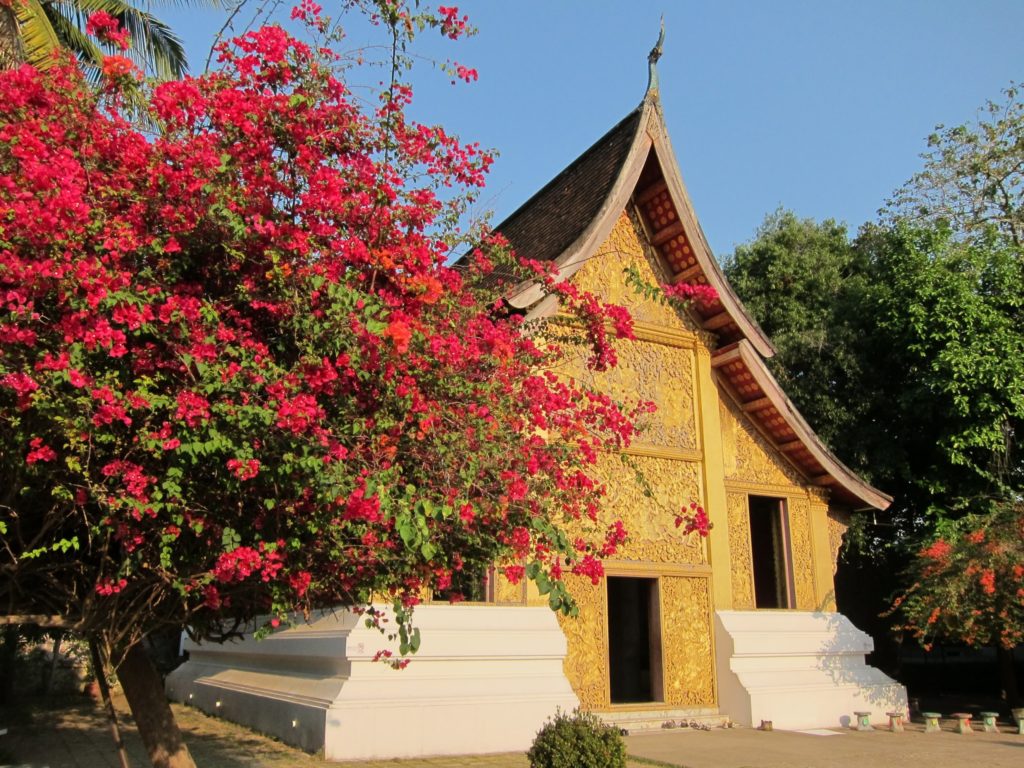
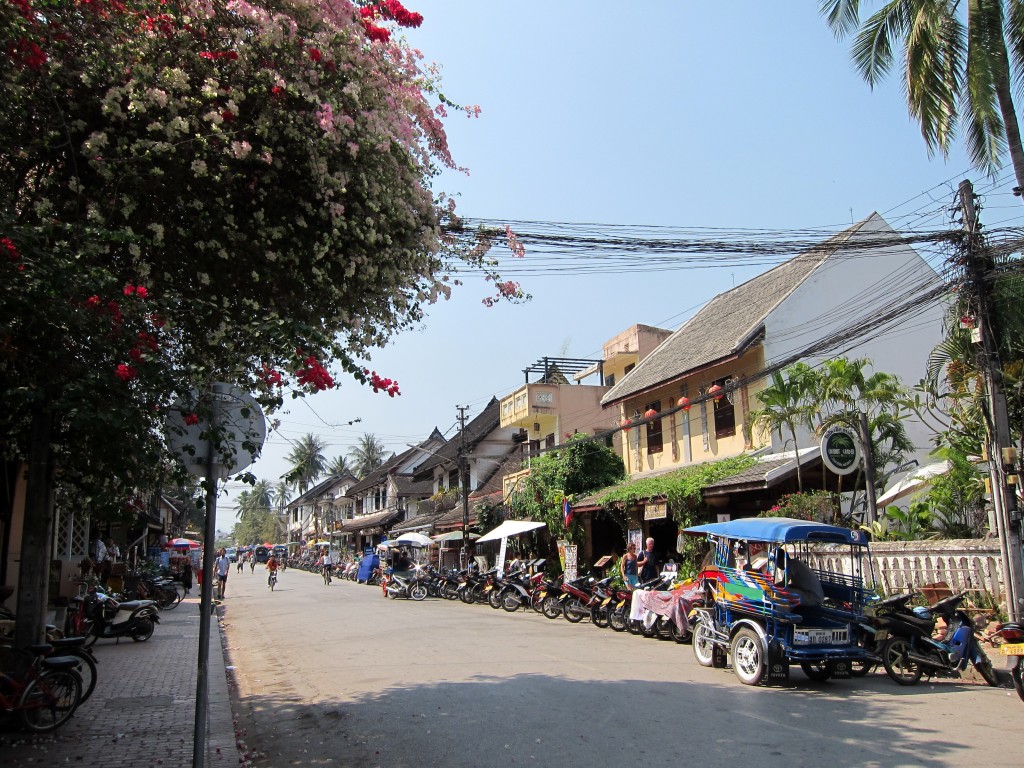
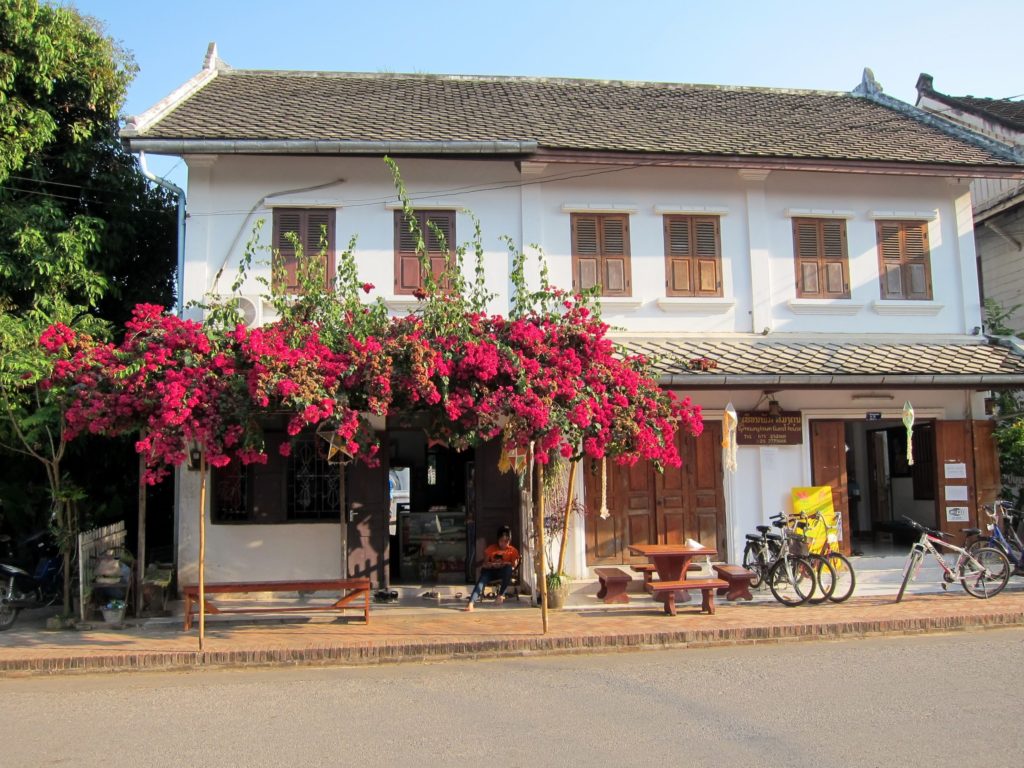
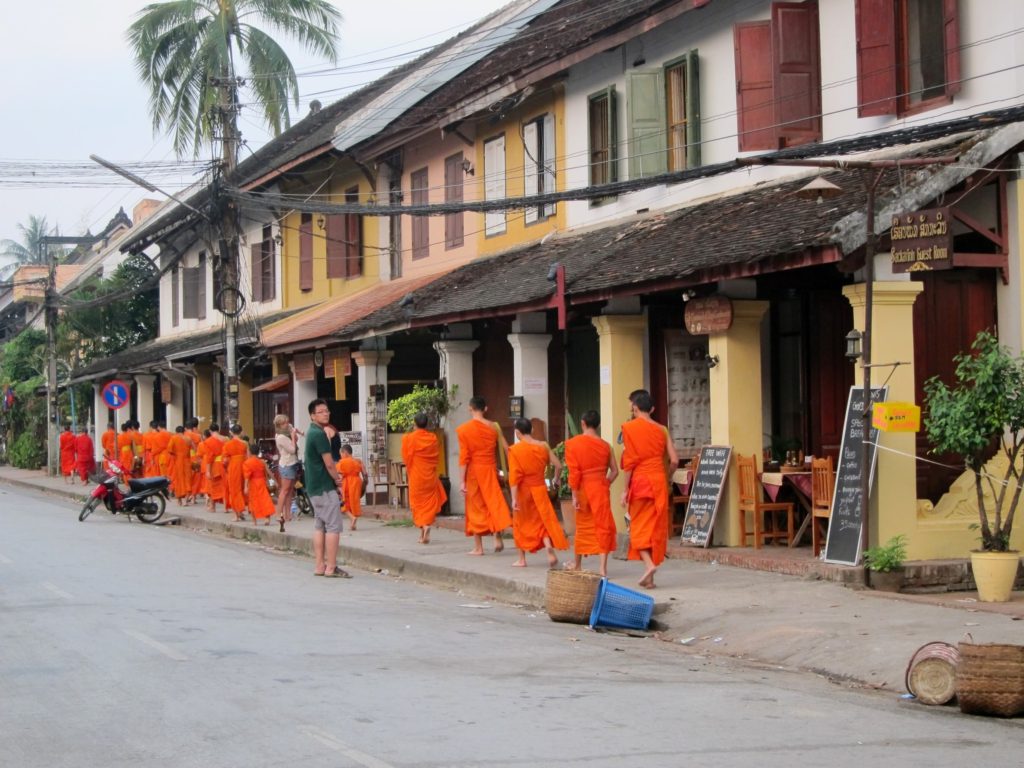
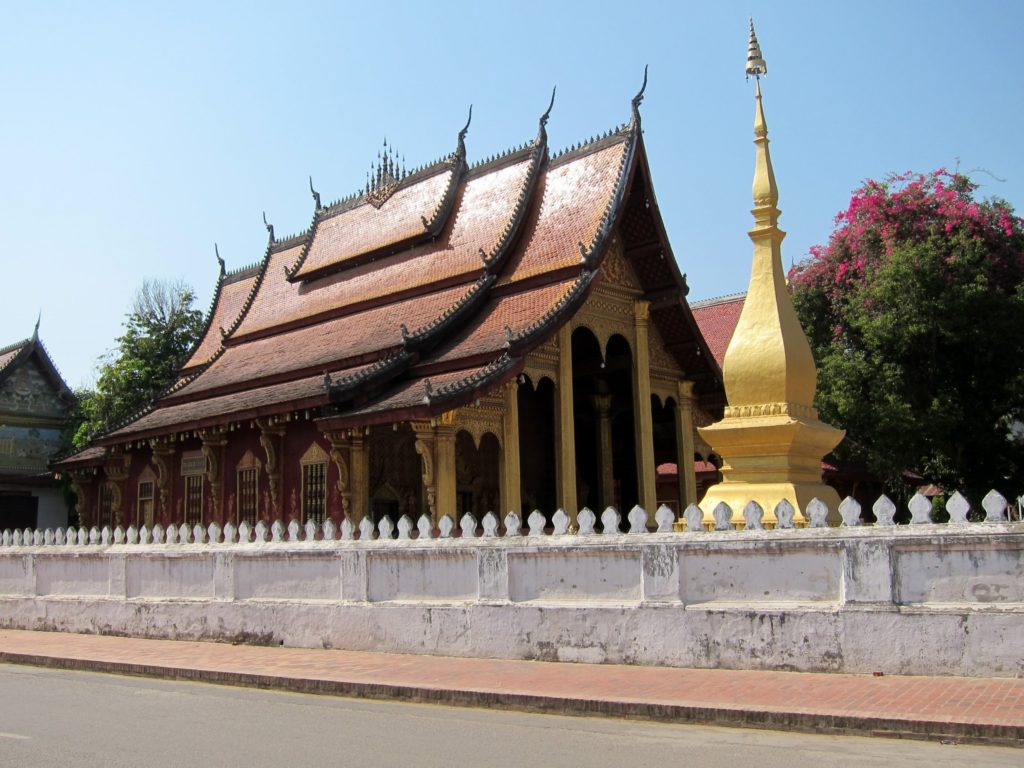
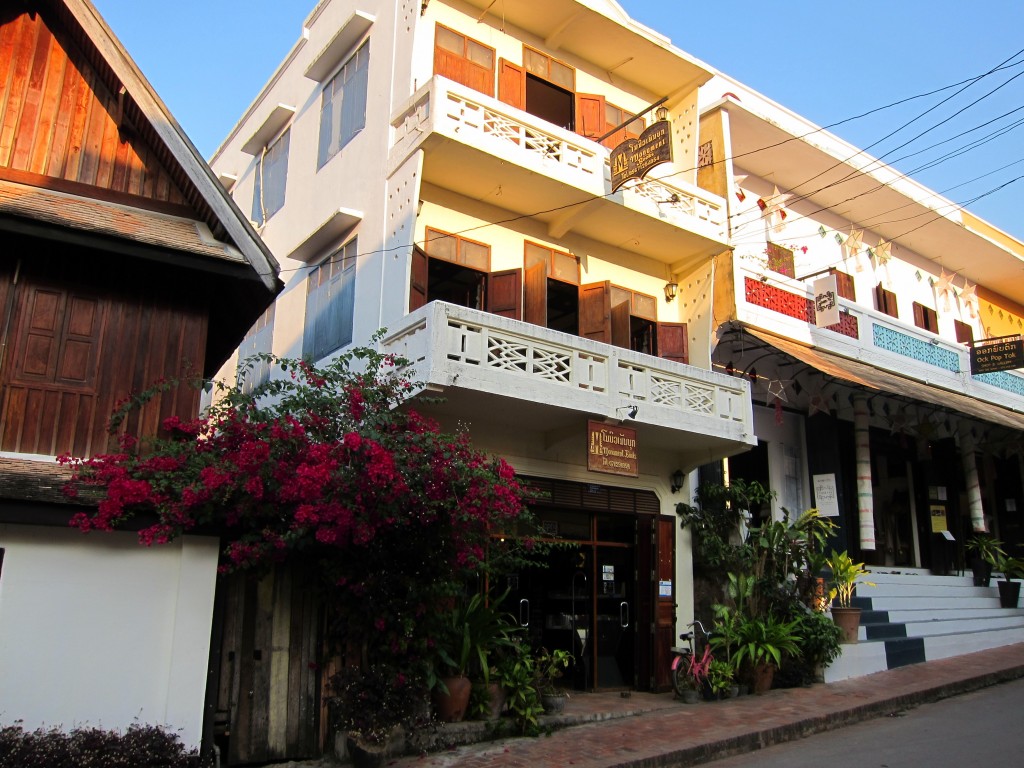
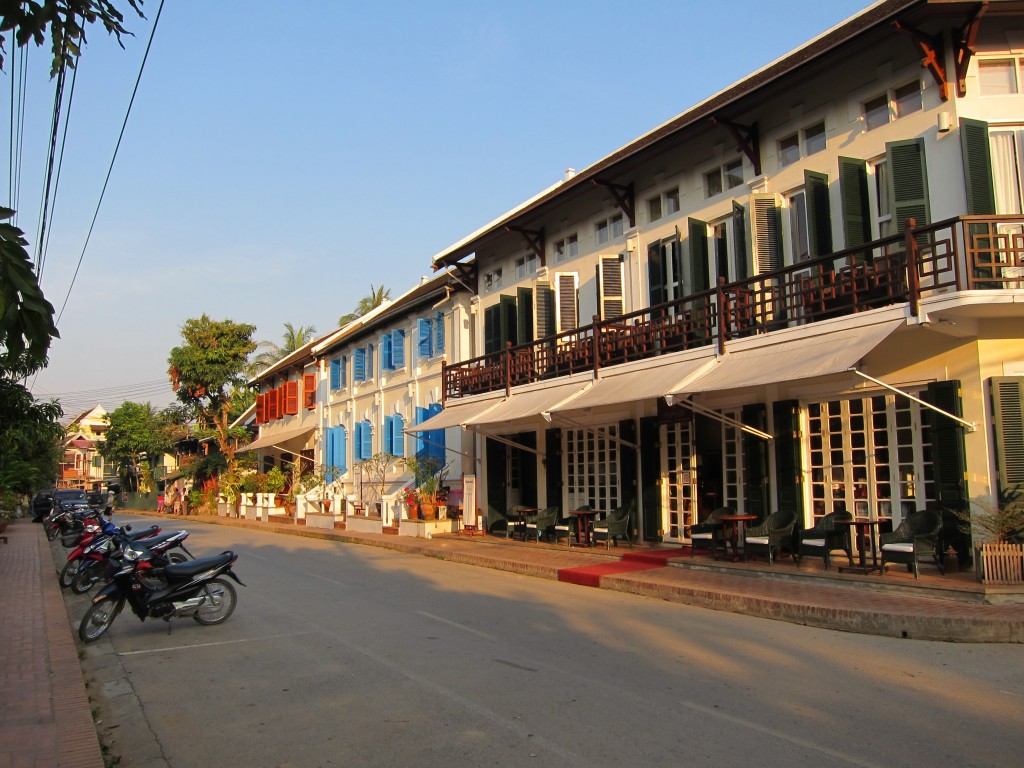
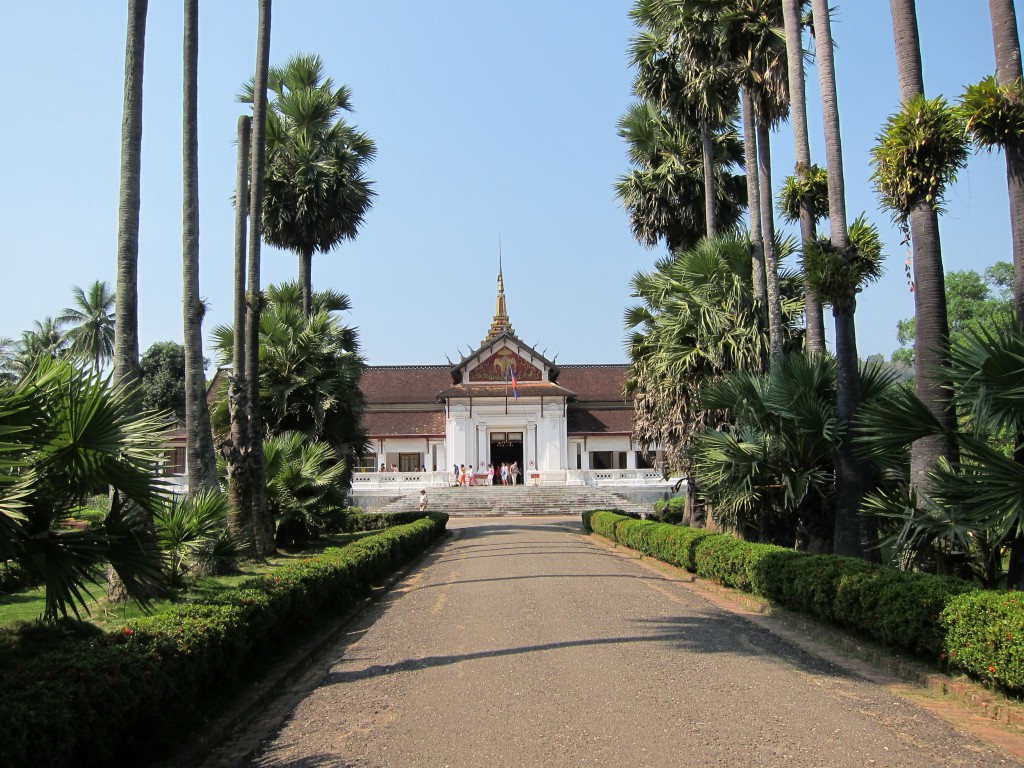
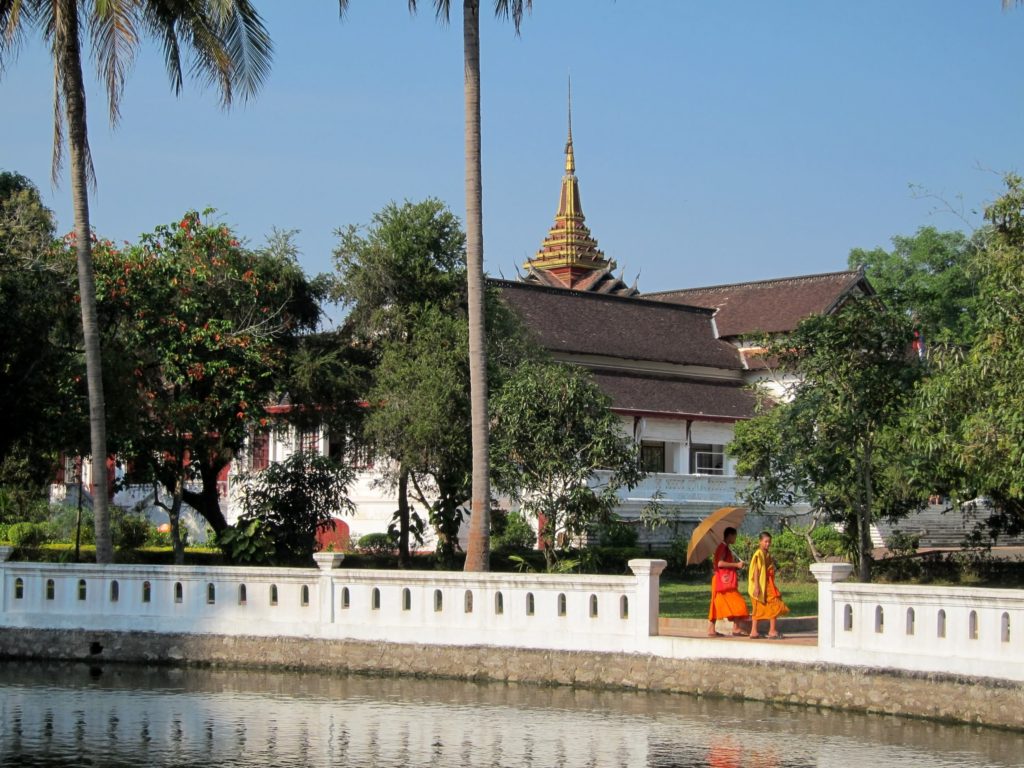
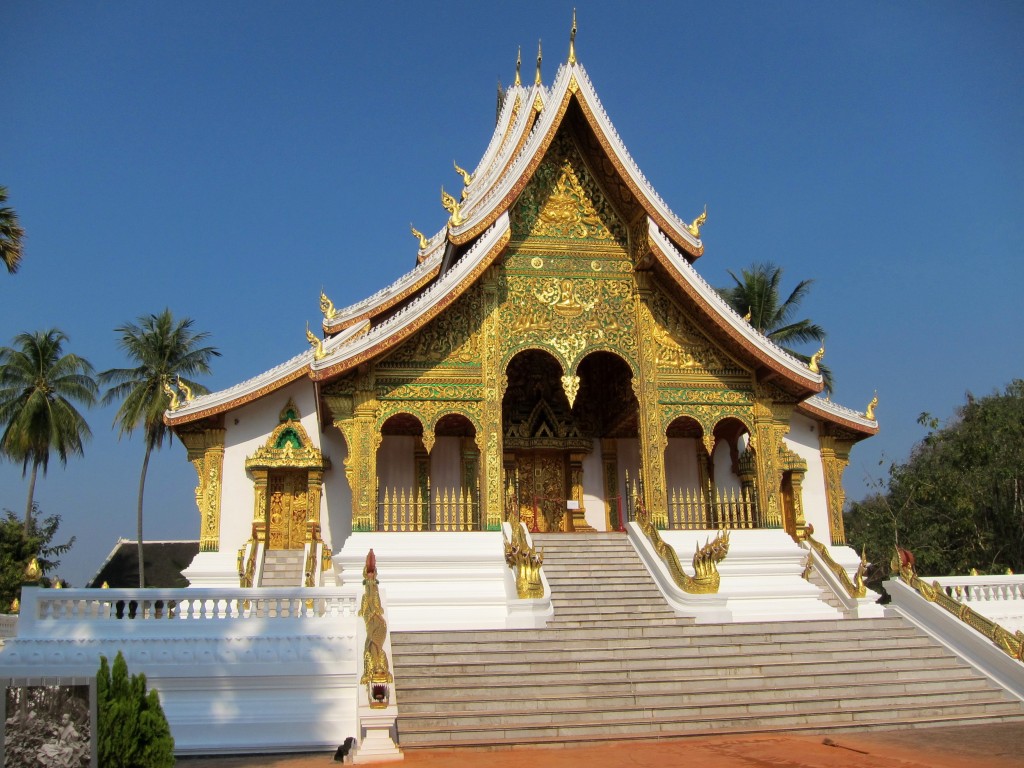
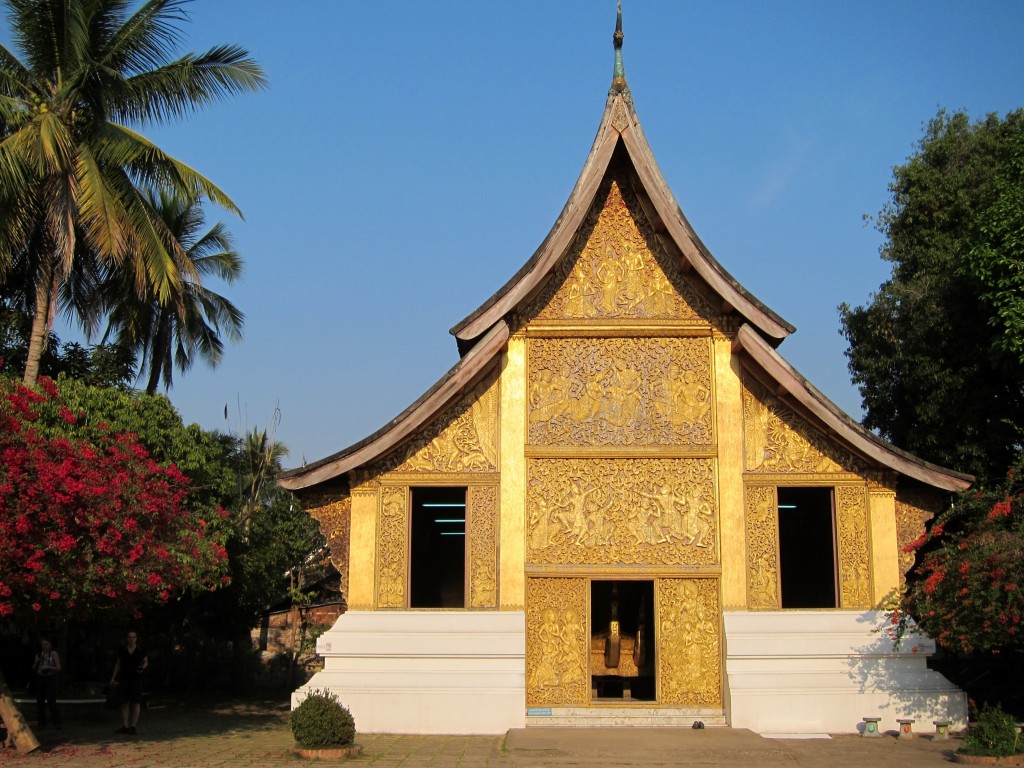
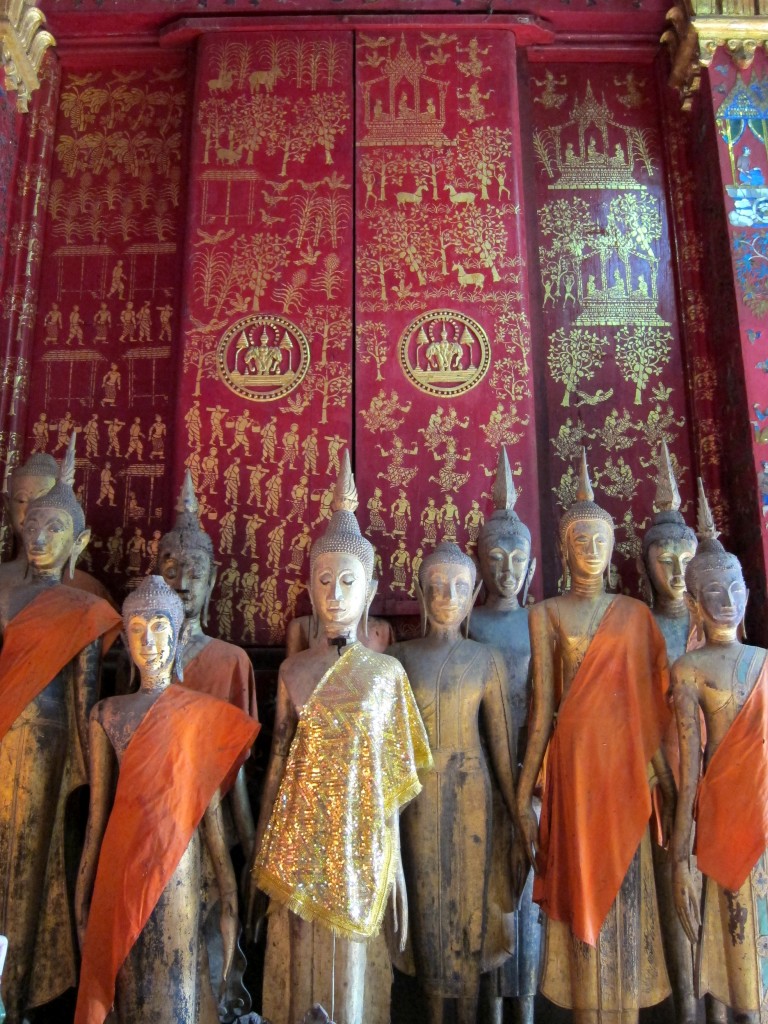
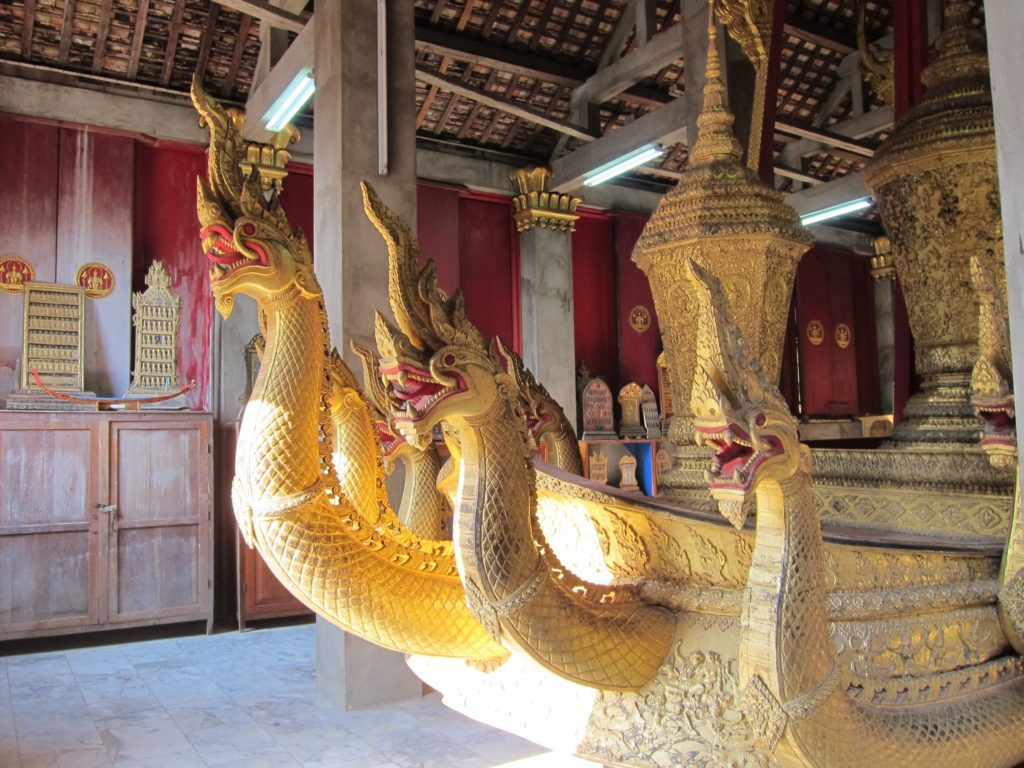
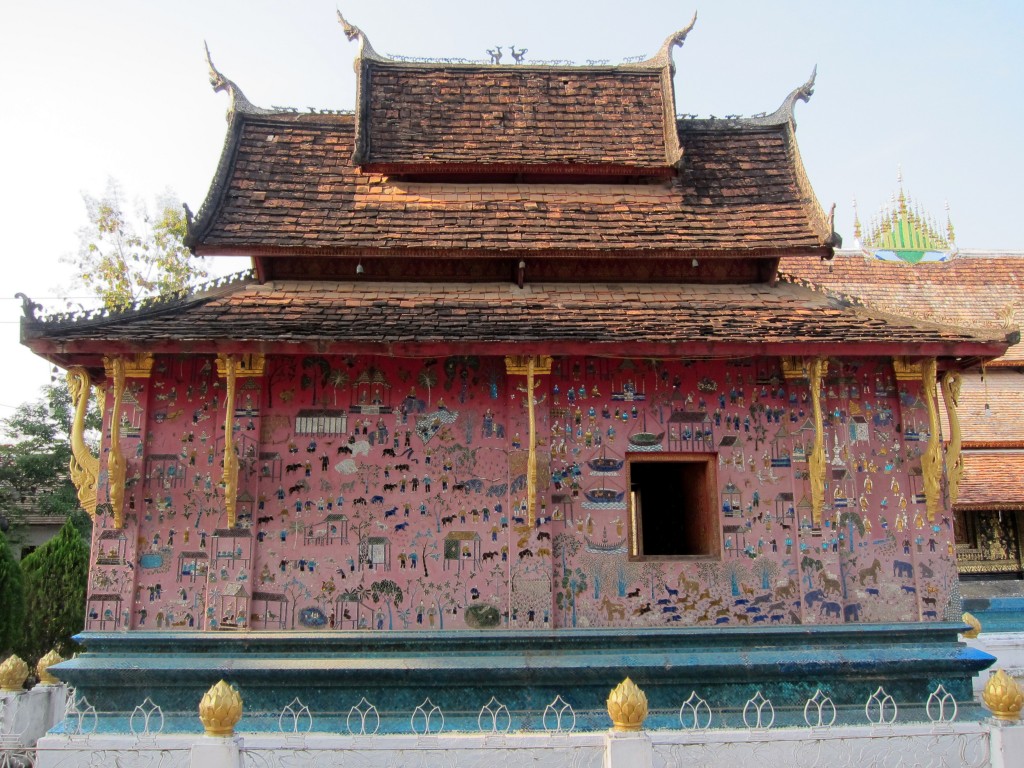
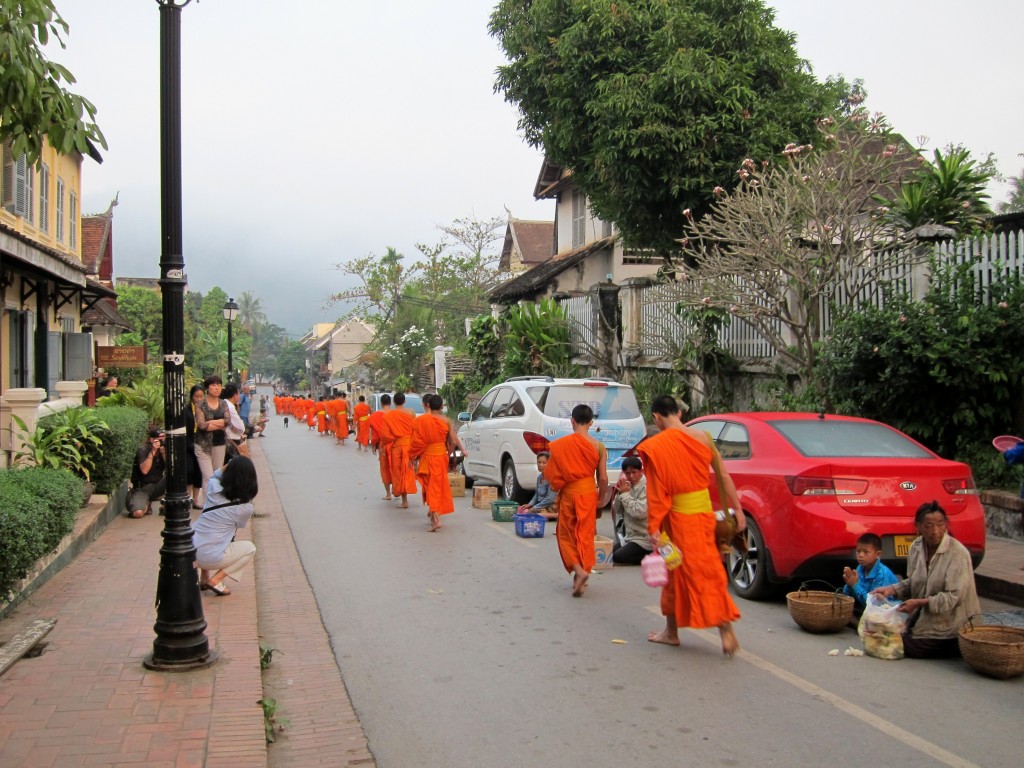
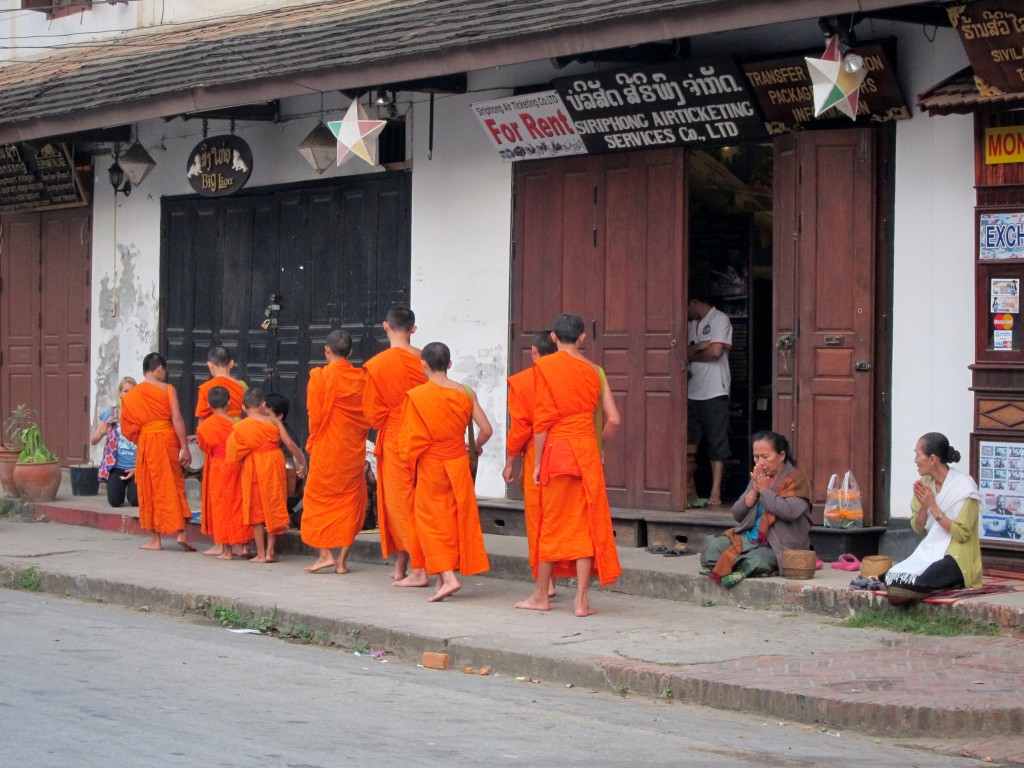
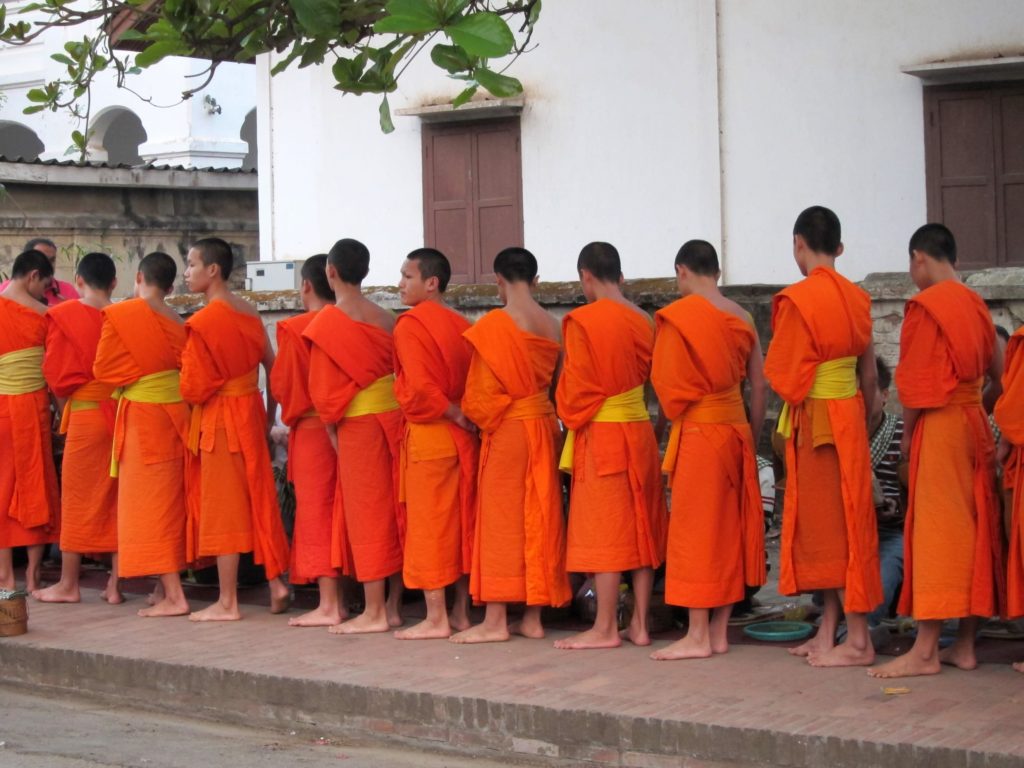
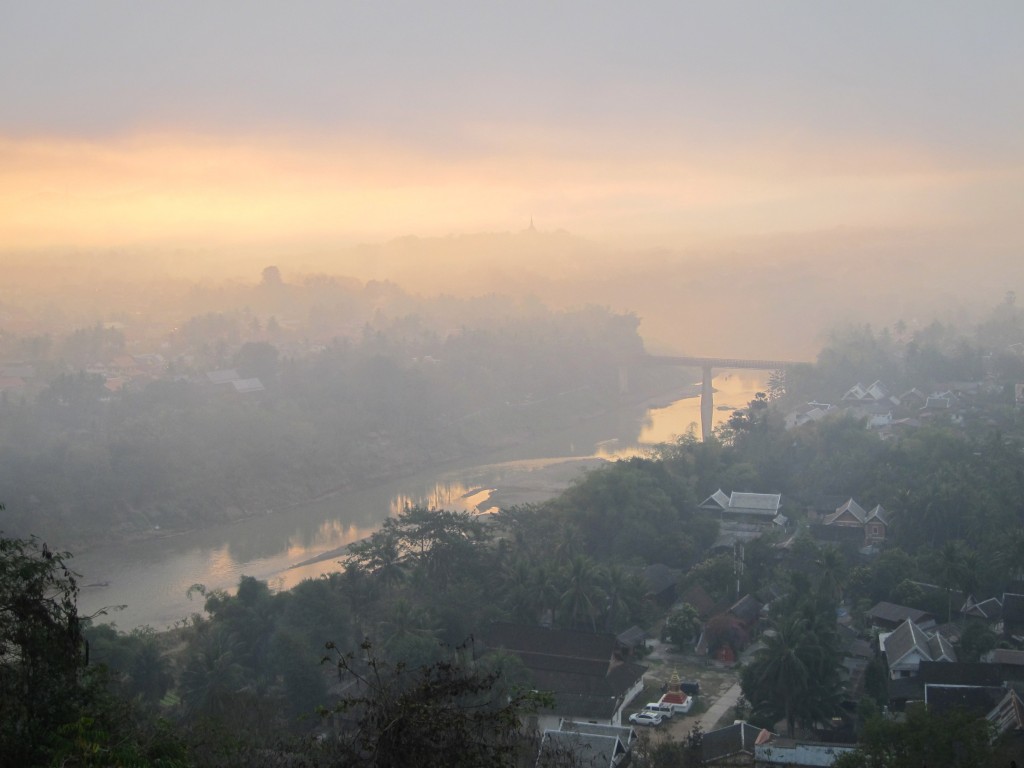
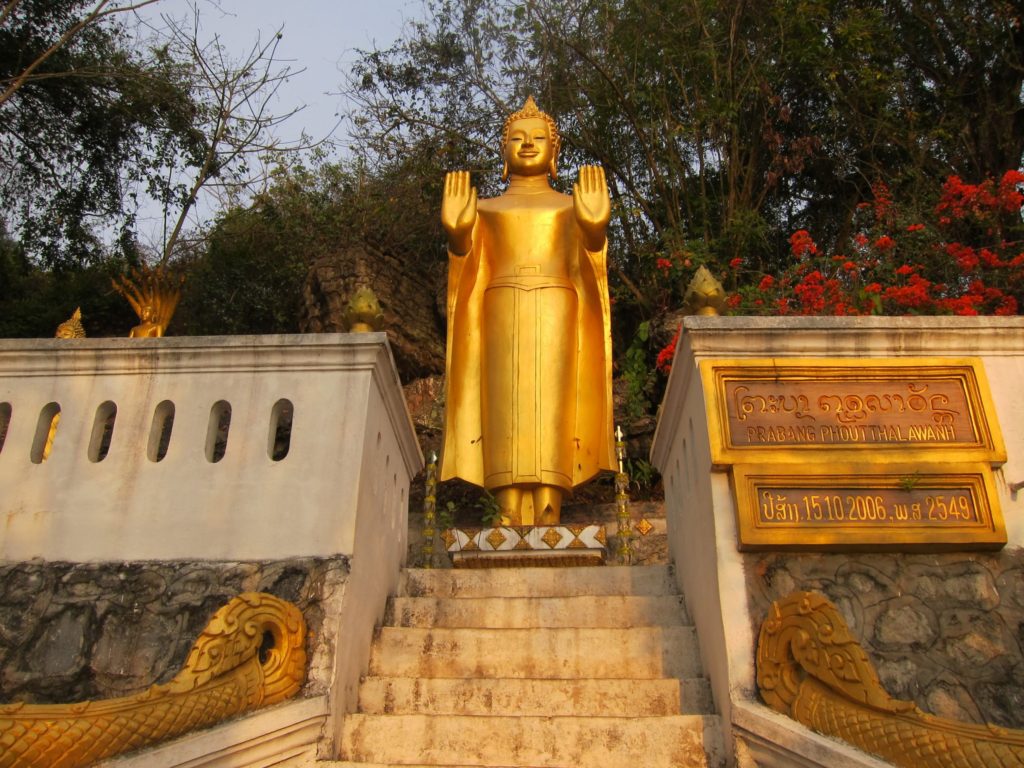
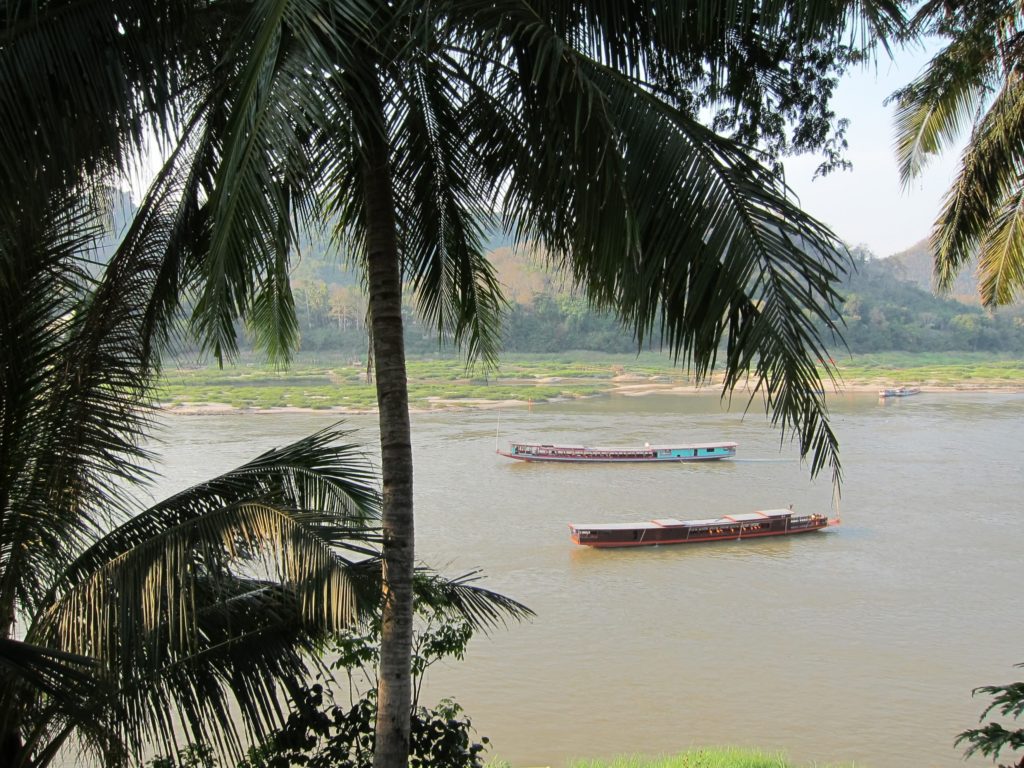
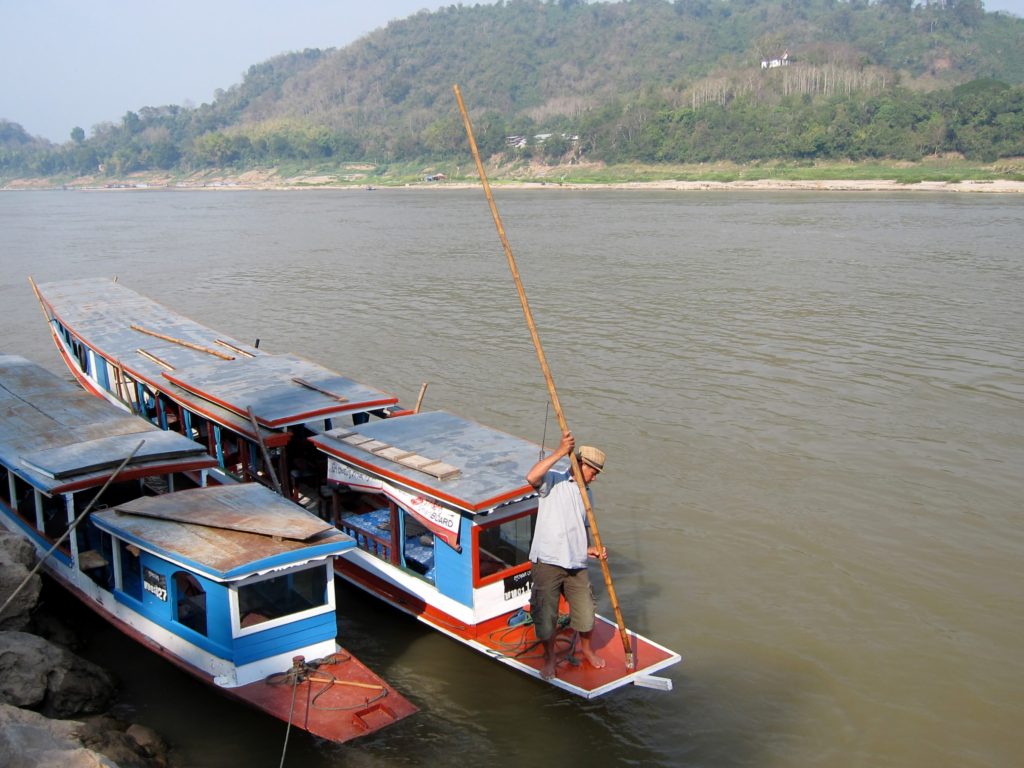
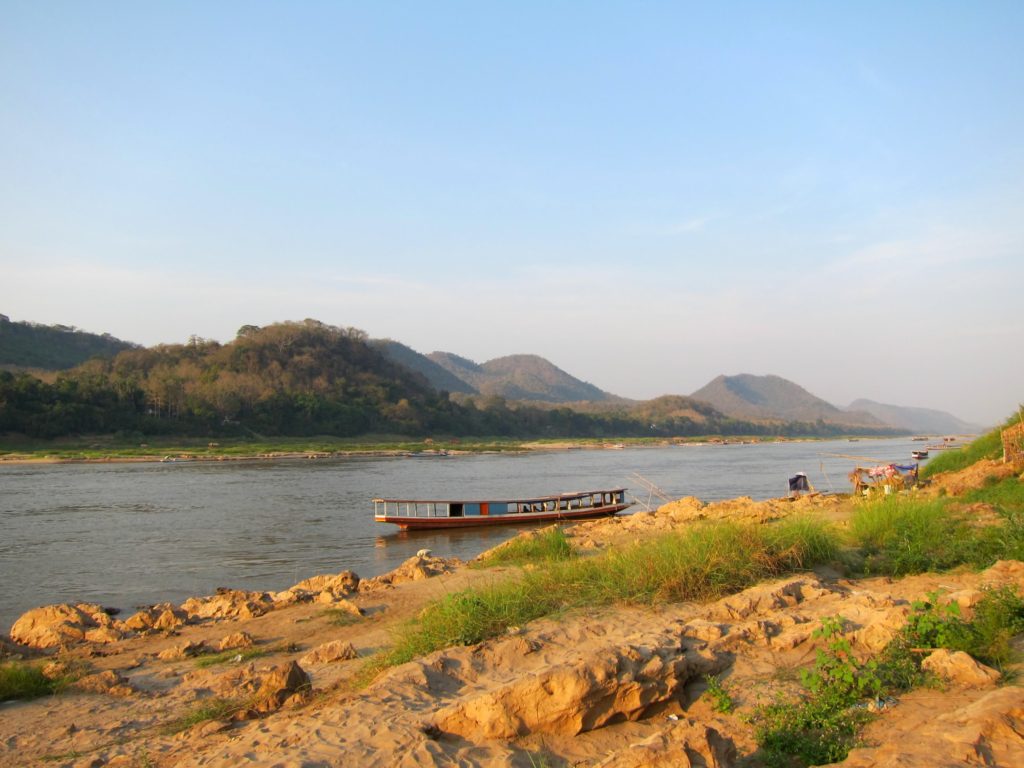
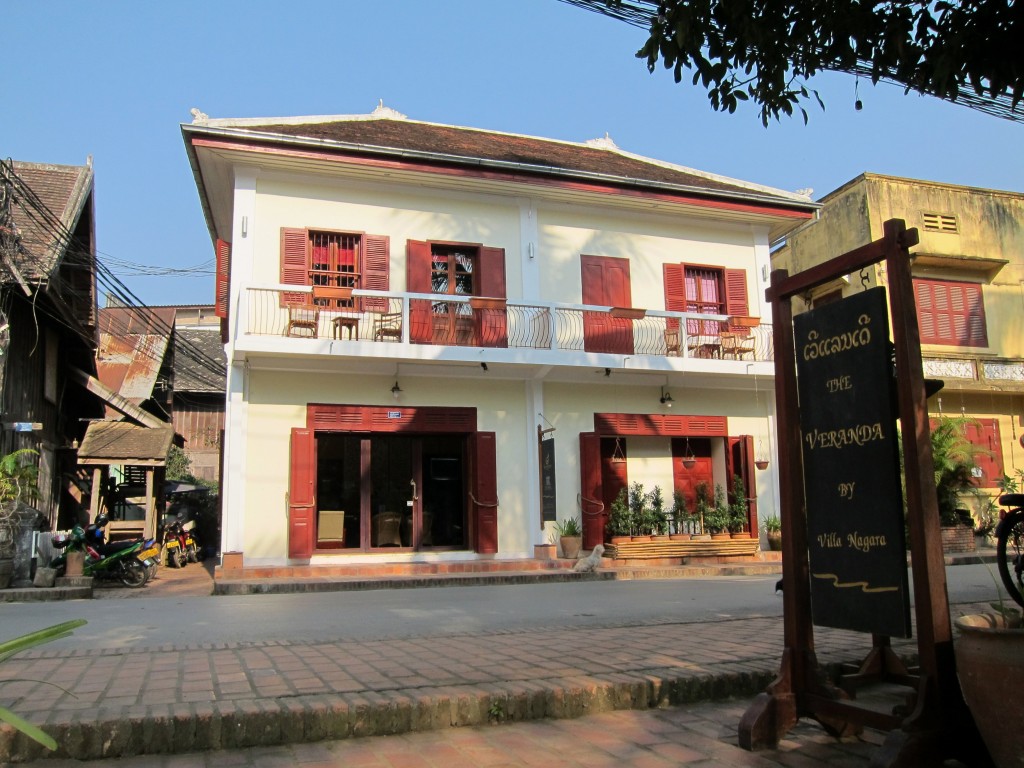
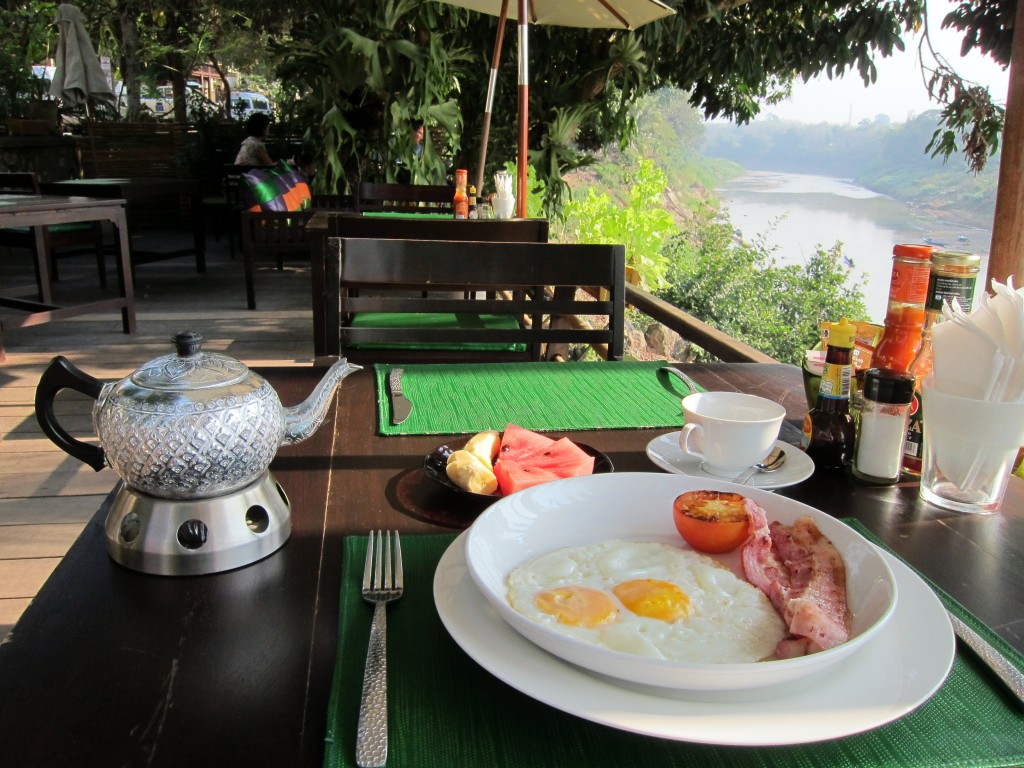
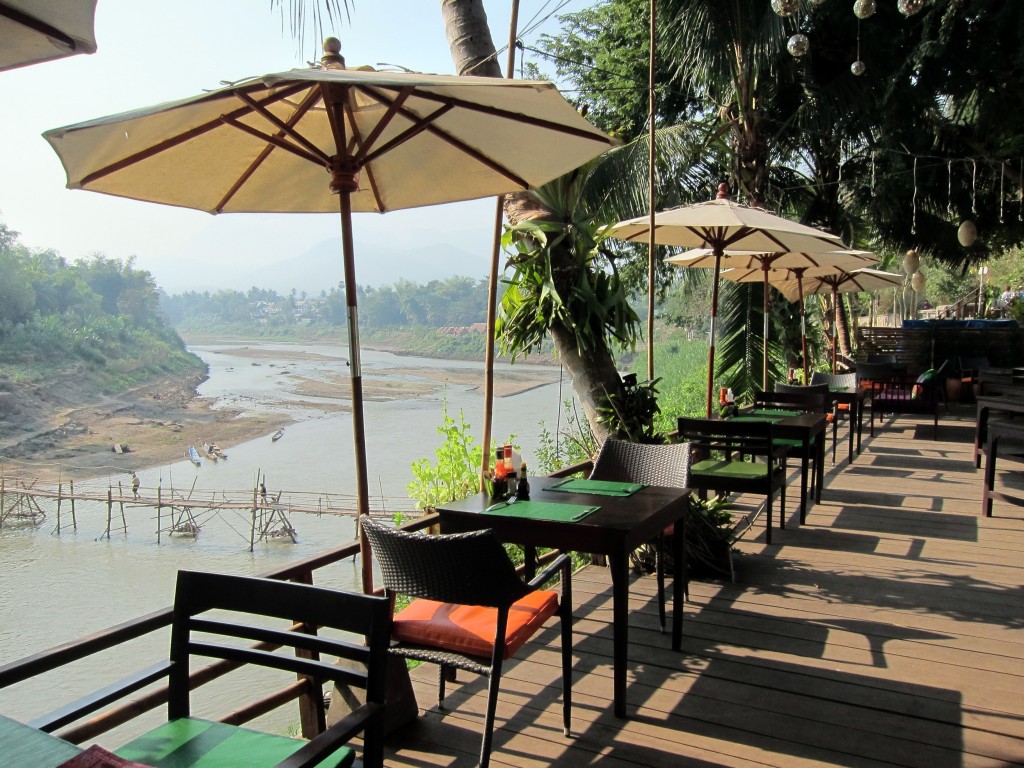
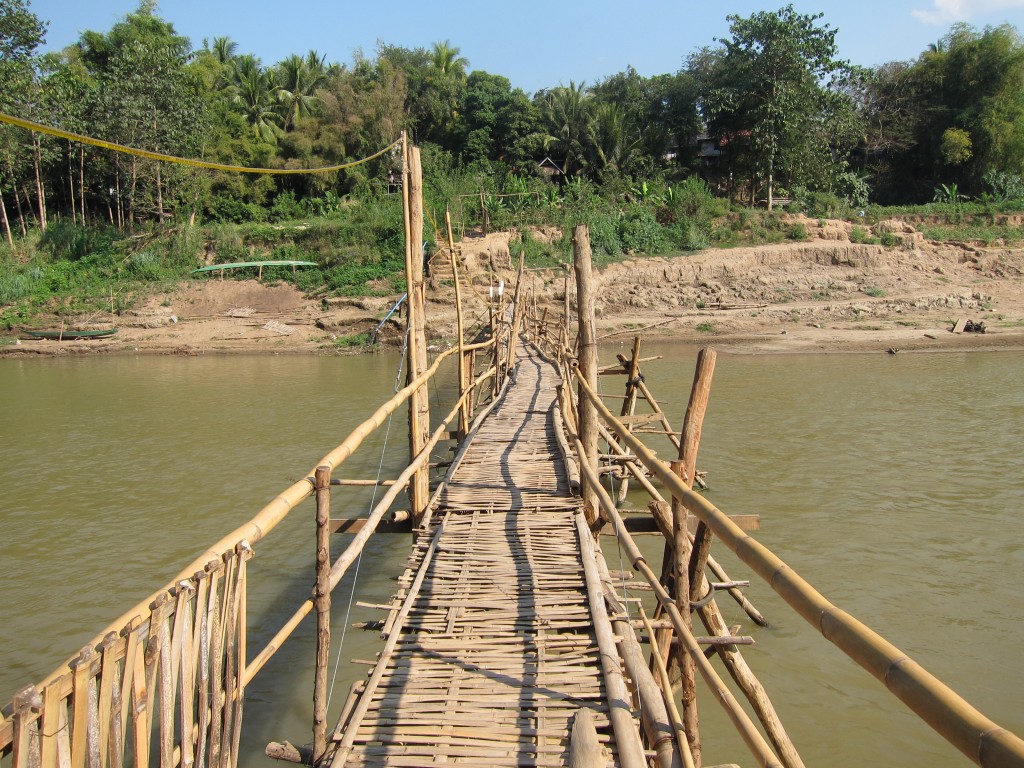
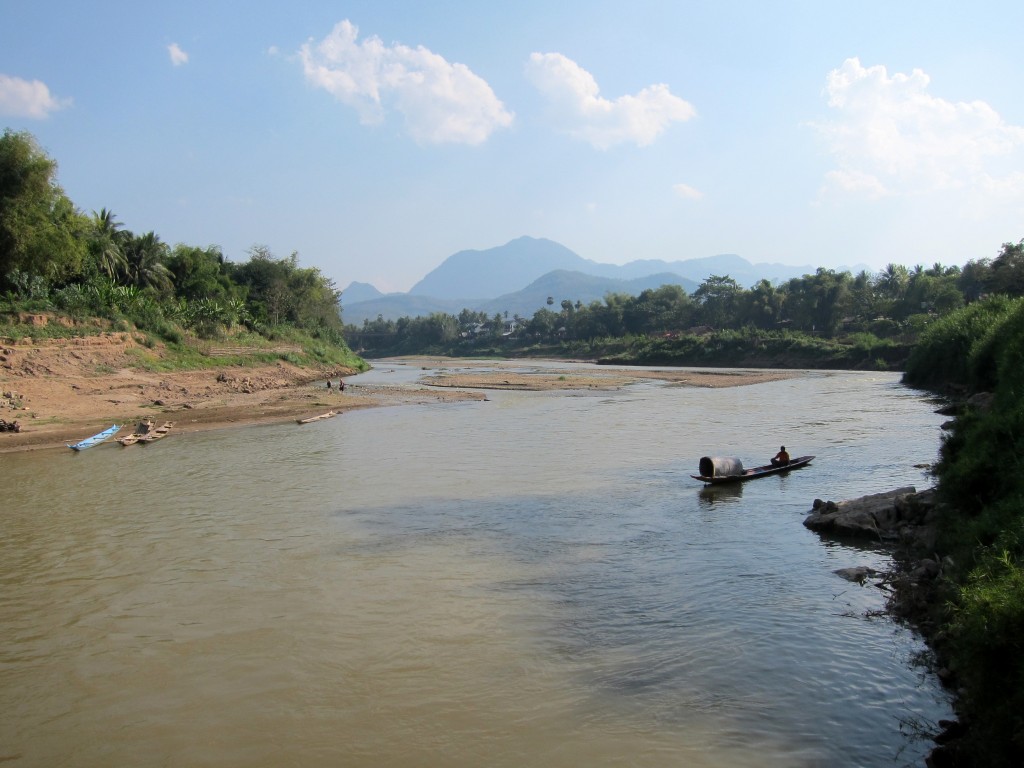
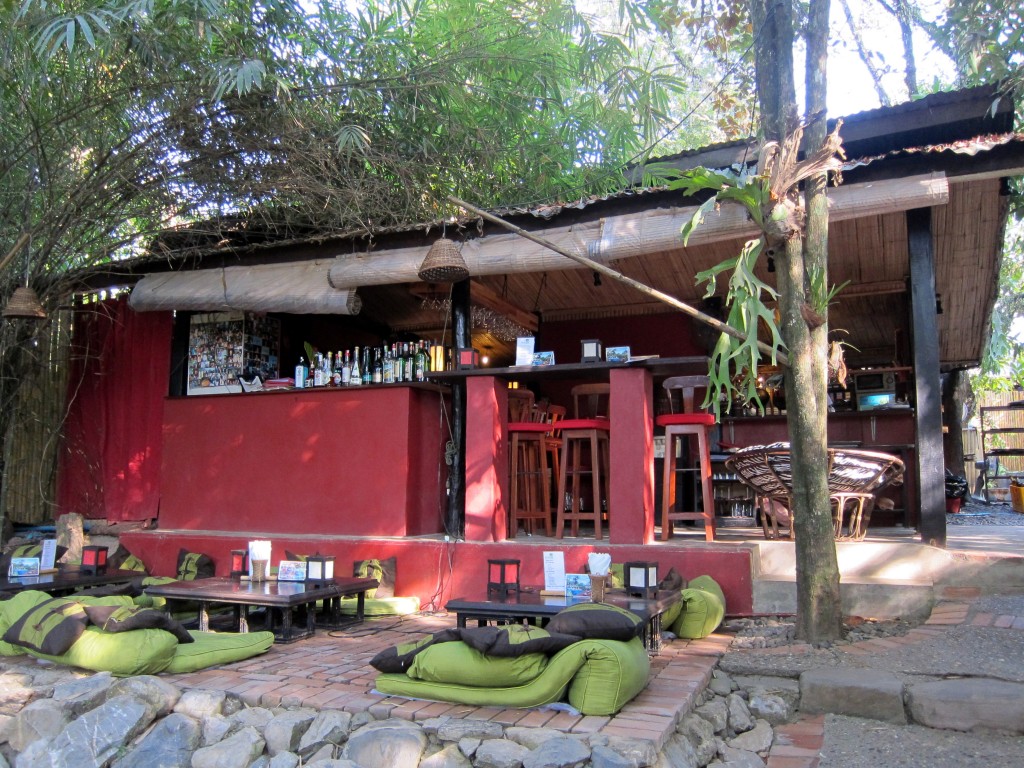
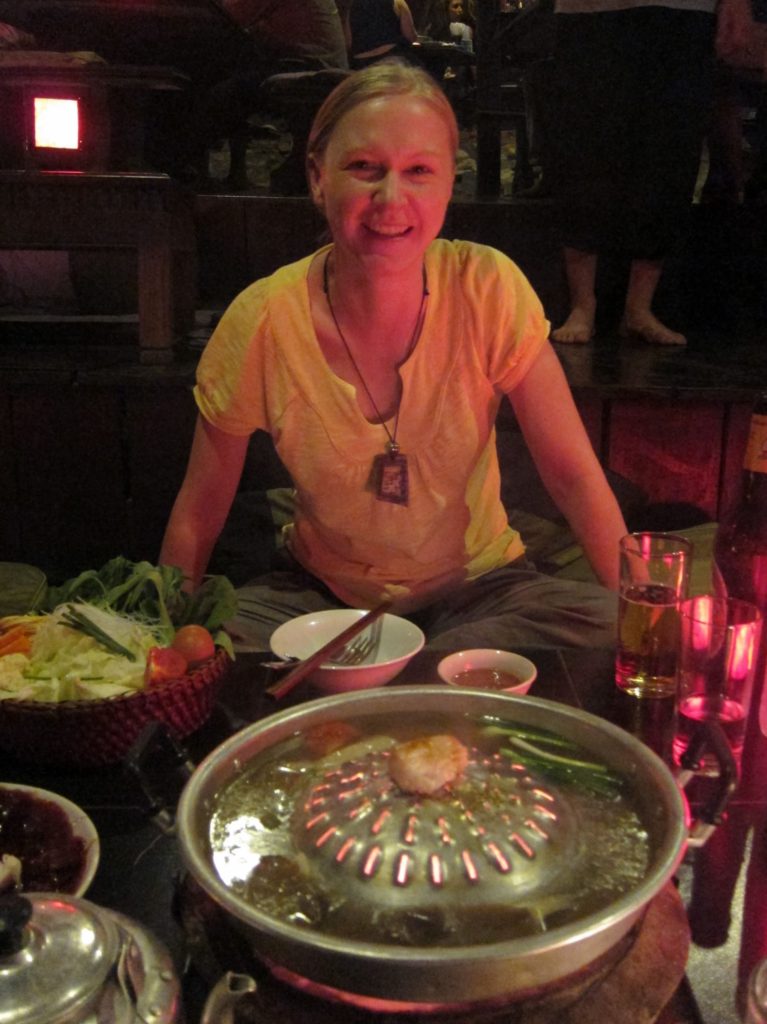
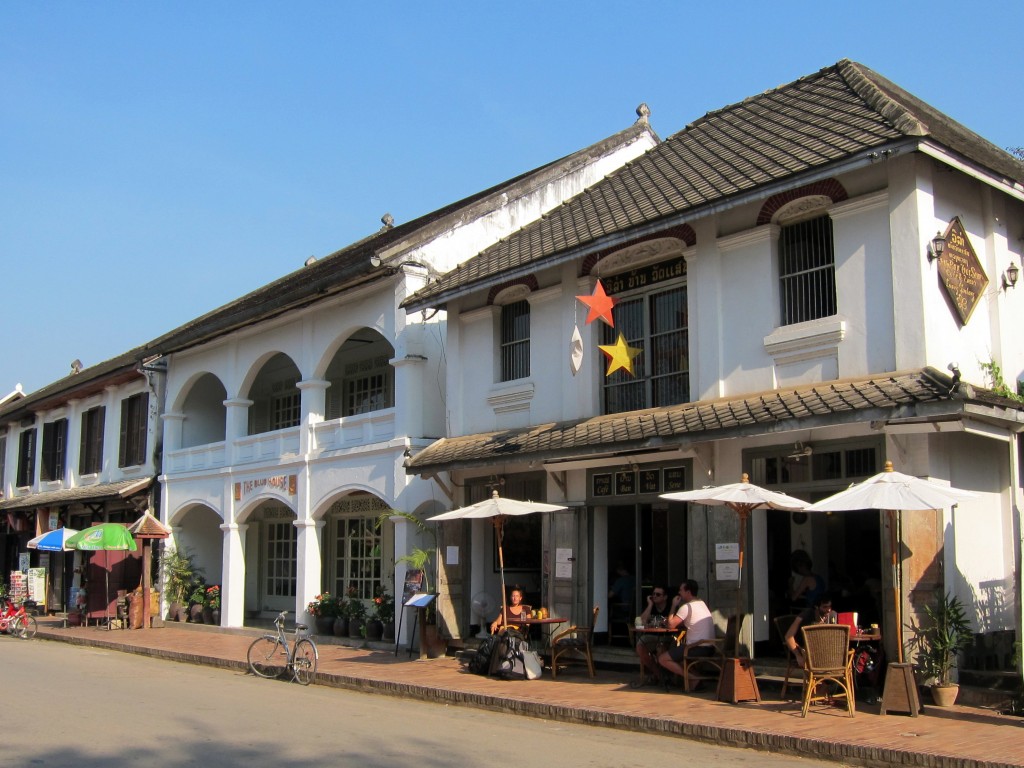
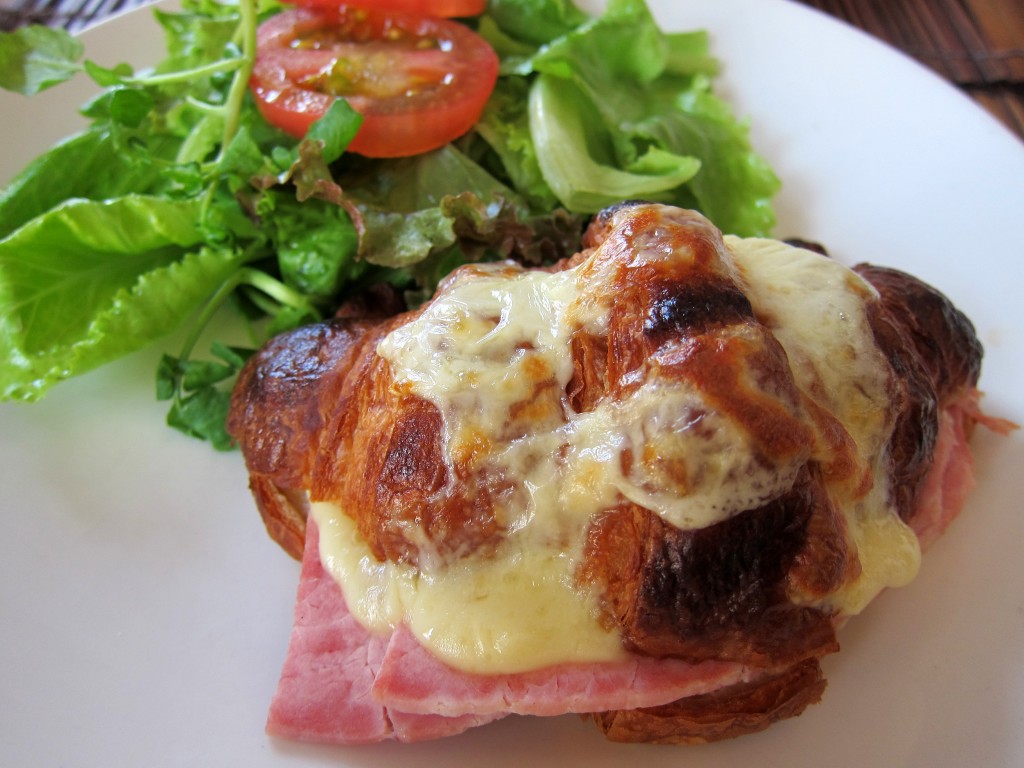
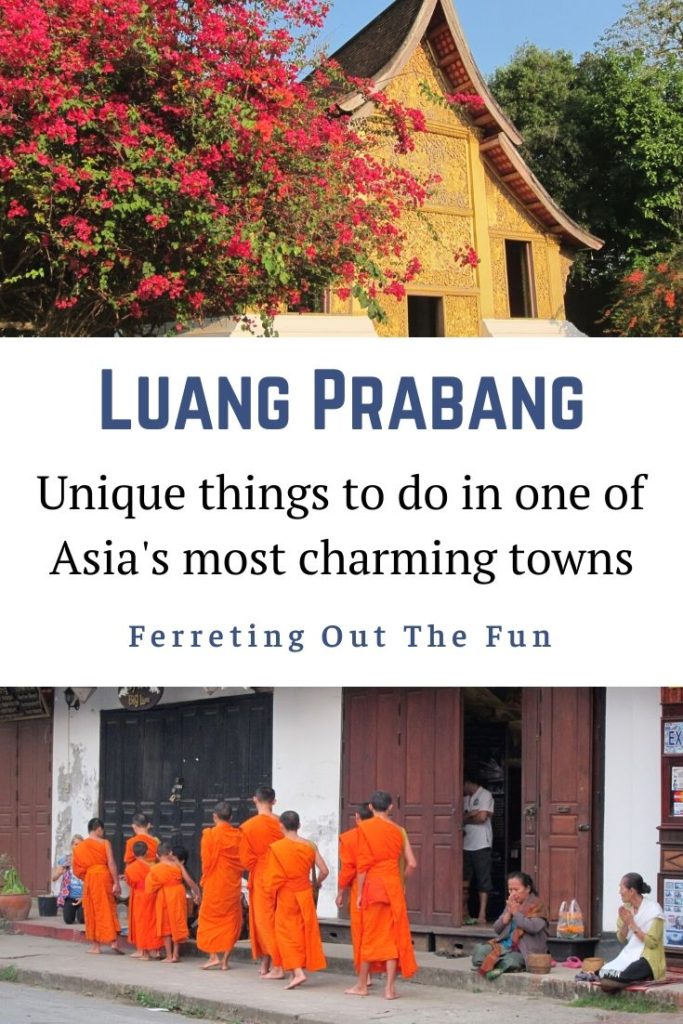
I don’t think I could have eaten much of this food. Although the
ham & cheese croissant and dessert at last restaurant looked
pretty good. I’m ready for some good dumplings and a good
ham & cheese sandwich. Some crepes would taste pretty good
too. See you in a couple of days.
You would have liked the water buffalo dish as long as you didn’t think too much about what you were eating. We really liked the food! It was similar to Thai but with a unique twist.
Great recommendations! Lao Lao Garden was definitely one of my favourite places too. We also became regulars at L’Etranger Books and Tea – the coffee was fantastic, they have a really good selection of used books, and they show movies a few nights a week in an upstairs lounge – it was a really relaxed and cool place.
I wish we’d been there long enough to become regulars somewhere! Hopefully we’ll get to visit again and try more of the fantastic cafes and restaurants.
What? Did you guys not find that tiny food alley with all you can pile on vegetarian food for $1.25? It was hilarious to see the eyes literally bulge out of my Vietnamese travel companions when they realized how much they could pile onto their plate…
Nope, we didn’t come across that alley, nor any street markets for that matter. We were pretty lazy and just relaxed into the slow pace of the town.